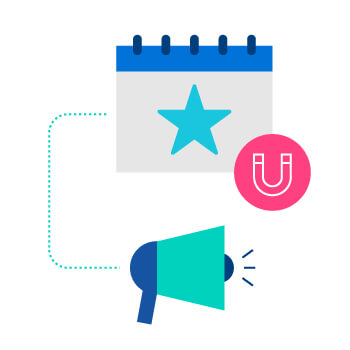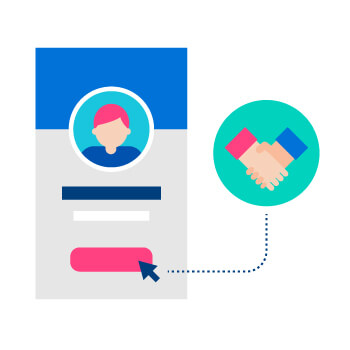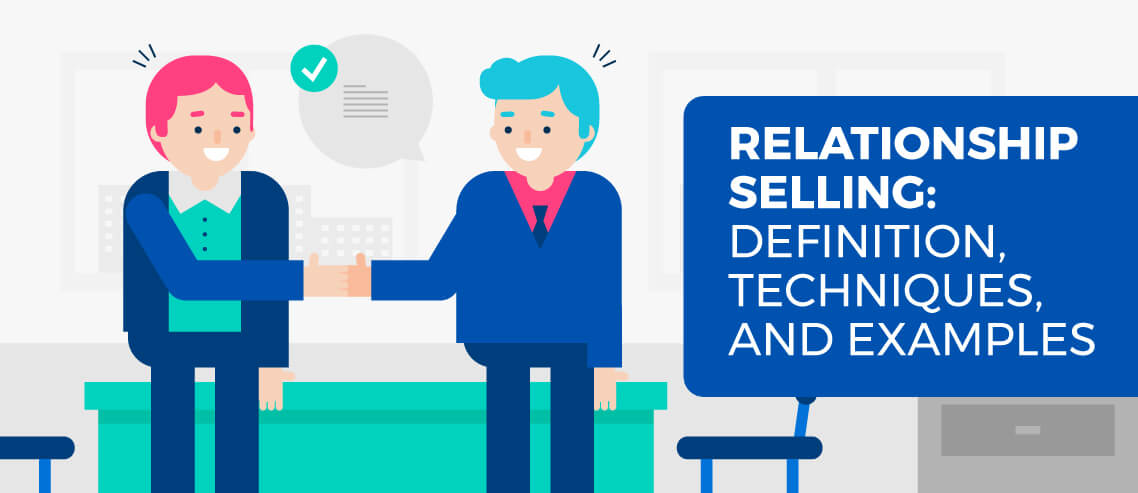How to Generate Leads Yourself as a Sales Rep (3 Can’t-Fail Tactics)

Contents
There are two types of salespeople: those who can generate their own high-quality leads and those who can’t.
Guess which type VPs of Sales and revenue leaders want on their team? Correct — they want people who can generate their own leads.
Keep reading to learn why this is the #1 skill every salesperson should master, and the 3 best tactics to generate all the leads you need.
Why Every Sales Rep Needs to Know How to Generate Leads
Even if your company has a strong lead generation engine, with plenty of inbound leads knocking down the door to talk to your sales team, you still need to know how to generate your own leads.
Sales managers, you never know when that magical source of inbound leads will dry up, and all you have left is the raw talent of your sales team’s ability to find new business for themselves, without anybody’s help.
Sales reps, being able to source your own leads will let you go above and beyond what everyone else is doing, crushing your quota while everyone else is complaining about not getting enough leads. Reps who can generate their own leads will always have an edge over reps who can’t.
Bottom line, no matter how many leads your organization gives you right now, or how they’re getting them, you should still be self-generating leads. You need to be a hunter.
When was the last time you closed a deal that started from you personally generating the lead?
When it comes to self-generating leads as a sales rep, here are the top 3 ways I’ve done it — both as an individual contributor and as a sales leader teaching others how to generate leads.
RELATED: What Is Lead Generation and How to Do It
Lead Generation Strategy #1: Events

Events can be a fantastic source of leads as an individual seller.
No, you don’t need to shell out big bucks for a huge event sponsorship with booths and swag. That can be a great strategy for an organization to get behind, but as an individual rep, you want to focus on lead generation strategies that aren’t reliant on the rest of your company.
As an individual, you can generate leads by going to events, large and small, and meeting other people in your industry and market.
Do you sell marketing software? Find marketing related events in your area and start meeting people. Don’t limit yourself just to the major conferences or trade shows. Find smaller events that will give you the chance to network and build relationships.
And don’t be afraid to pay out-of-pocket for some of these events. In many cases, it’s worth it to pay a small ticket price to walk away with a couple of valuable relationships and conversations, versus haggling with your manager over how much budget you can get reimbursed.
When you’re at these events, focus on meeting people and engaging with them on a human level. At smaller events and meetups, don’t be the person who is there just trying to sell everyone on your product.
Find a short response to the question, “So what do you do?” that includes your target market and the pain point you solve. Try to keep it as short and simple as possible so you can say it to anybody you meet, opening the door for a sales conversation if they are in your market and have the paint point.
But never being pushy.
I like to use a variation of, “I help companies generate leads,” sometimes replacing companies with startups, founders, B2B companies, sales leaders, or marketing leaders, depending on the event and audience. If that statement is relevant to the person I’m talking to, they’ll follow-up to ask more.
For people dealing with their own lead generation problems, that statement almost always gets a good response. If they couldn’t care less, then I can let the conversation naturally flow without being off-putting by trying to sell them on something they don’t want or need.
RELATED: The Perfect Networking Follow-Up Email Strategy (With Templates)
Lead Generation Strategy #2: Cold Prospecting

This strategy is about good old-fashioned cold calling (and emailing).
When you hear people describe a sales rep as a “hunter,” they are usually talking about someone who isn’t afraid to go out and prospect for their own new business. If you’re good at cold prospecting, you’ll be able to bring in business
The upside here is that so many salespeople will do anything to avoid any kind of cold outbound activities. Many sales organizations nowadays are structured so that the only people who ever prospect regularly are junior sales reps (usually called Sales or Business Development Reps) whose sole focus is generating leads through cold outbound prospecting.
What this means for you is, if you are willing to go the extra mile and do your own prospecting, you can be a rockstar in your sales organization.
RELATED: How to Set Up a Winning Sales Cadence For Prospecting
How do you get started generating your own leads through cold outbound prospecting?
First, you need to define your audience and then build a list of prospects. In some industries, cold email will be your primary prospecting channel, in others, cold calling will work better. Most will be a mix.
There are hundreds of tools out there that will help you source phone and email data (even if it’s just corporate phone numbers and guessed business emails). LinkedIn will also be your friend here (more on LinkedIn below).
Next, you need messaging. Build a call script. Write a sequence of cold emails. There are too many techniques to list here, but having personally written thousands of cold email campaigns for companies, my advice for writing a great B2B cold email is:
- Be relevant
- Be concise (with your language)
- Make it easy (for the prospect)
Once you have your messaging and your list, you’ll need a way to send emails and make calls. With email, it can get tricky to manage prospecting directly out of your email inbox.
Most people who send more than a few cold emails per month will want to get a cold email tool (like Mailshake) to manage this process. (Don’t use a marketing email platform. Make sure the tool is designed specifically for sales.)
The topic of cold prospecting goes deep. For more, I’d highly recommend diving into this blog and picking up a copy of Fanatical Prospecting by Jeb Blount and New Sales Simplified by Mike Weinberg.
Check out this short video to see How to Use LeadCatcher to Manage Your Cold Email Leads in Mailshake:
Lead Generation Strategy #3: LinkedIn

I’ve saved the best for last.
In my opinion, LinkedIn is the number one social media tool for individual salespeople looking to generate their own high-quality leads.
So long as your target market is on LinkedIn, you should be on LinkedIn. My company, RevenueZen, has generated close to 40% of our new business through LinkedIn in the last couple of years.
RELATED: LinkedIn Lead Generation: A Proven Process to Close More Deals on LinkedIn
Lead generation strategies on LinkedIn can be as simple as growing your social media network by sending relevant connection requests to people in your market and then starting conversations with them.
Do a search on LinkedIn Sales Navigator. Read through a profile. Send a customized connection request or LinkedIn InMail, and start conversations with people.
In some ways, this online marketing tactic is similar to cold email, but you’ll typically need to be a bit ‘softer’ in your approach. Connection requests can include a small message so make sure to tell people why you’re connecting.
If you use InMail to send messages, you can fit more characters in your message, but you’ll still want to follow the tips above for messaging.
Once people connect with you, follow up with them.
Check out their social media profile and ask relevant business-related questions to see if they are qualified customers. You shouldn’t spam your product pitch to everybody you’re connected to. Simply have human conversations that are professionally relevant and people will engage with you about your product (if it solves a pain point for them).
This is what people mean when they talk about social media selling on LinkedIn
Bonus points if you go and start engaging with your network through LinkedIn content, comments, and posts. I’ve both bought and sold products that originated from LinkedIn posts and comments that led to a connection, then conversation. These are the small things that most sales reps just aren’t doing.
Aside from LinkedIn Sales Navigator, this is all free.
Note: If your company won’t pay for Sales Navigator and you’re a sales rep, pay for it out of pocket (and maybe start looking for a new company).
RELATED: 14 Best Practices for LinkedIn Prospecting
Closing Thoughts
The hardest part about B2C or B2B lead generation strategies is that it takes time with today. But if you’re willing to put in the work, you’ll get great results with today’s customers.
Best of all, you don’t need to rely on your company to send you 100% of your sales leads. If you’re willing to put in the work, you can generate your own leads.
Here’s what you need to remember about how to generate leads:
- Don’t be afraid to spend a few dollars to arm yourself with the tools you need to find new leads. Whether this is a small event fee, LinkedIn Sales Navigator, email marketing tools, or any other social media tool, it pays off in the long run. Use Google and other search engines for researching. And if you’re a sales leader, arm your team with these tools!
- Go to offline events, large and small. Go, get in front of more people, and be ready to talk to curious prospects about what you do, who you help, and what pain points you solve. Don’t forget to jot down any contact information.
- Cold prospect. Just do it. It may not always be fun, but great salespeople are great at acquiring sales leads specifically because they’re willing to do the work that others don’t want to do.
- In your messaging, be relevant, be concise, and make it easy on your prospect. This is true for all communication channels, especially email and LinkedIn.
- Be human. This is true no matter which channel you’re using for lead generation success.
These 5 takeaways will help you self-generate all the sales leads you need. Put in the time, and you’ll reap the rewards. Namely, you’ll quickly become the rockstar sales rep on your team.
Do you generate your own sales leads? If not, what’s the biggest challenge for you when it comes to B2B lead generation strategies?
Do you generate your own leads? If not, what’s the biggest challenge to doing your own lead generation?
Lead Generation FAQs
What is a lead generation process?
The lead generation process is all about targeting prospects who match your target audience and highlighting how your product can resolve one or more of their key pain points. Most lead generation processes involve multiple stages and touchpoints, taking the prospect from the moment when they first learn about a problem to the point at which they’re ready to buy.
What are the types of lead generation?
There are two broad types of lead generation — outbound and inbound. The former involves classic sales tactics such as cold calling, email marketing, and direct mail, while the latter is all about leveraging online marketing channels like social media and search engines.
Which is the most common source of lead generation in a company?
Different lead generation strategies, channels, and platforms deliver different results for different types of businesses. However, one survey of B2B marketers named email (chosen by 73% of respondents) and search engines (70%) as the most popular lead generation sources.
Is lead generation easy?
Theoretically, lead generation and overall sales effectiveness is simply about finding a strategy that works and repeating it. Sounds easy enough, right? However, 61% of marketers say generating traffic and leads is their number one challenge, which suggests it isn’t quite so simple.





